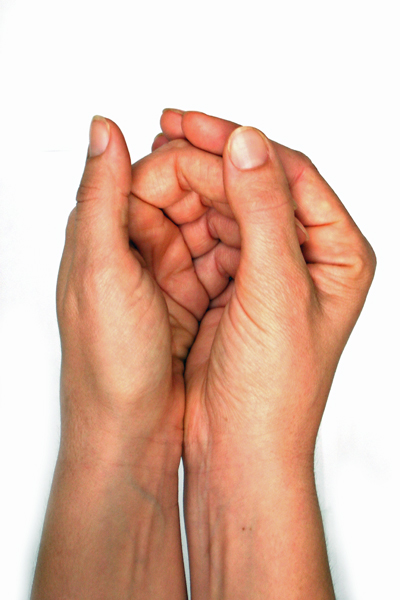The Difference between Arthritis and Carpal Tunnel
 You rely on the use of your hands for almost everything you do on a daily basis. But when you have constant pain and discomfort in your hands and wrists, these simple tasks become more difficult and uncomfortable.
You rely on the use of your hands for almost everything you do on a daily basis. But when you have constant pain and discomfort in your hands and wrists, these simple tasks become more difficult and uncomfortable.
Two big culprits of this type of pain are carpal tunnel syndrome and rheumatoid arthritis (RA) – conditions infamous for the pain and discomfort they cause in hands and wrists. Because they both lead to a similar type of pain, they can be easily confused. However, these conditions aren’t related. Carpal tunnel syndrome and RA are distinctly different when it comes to their causes and how they’re treated.
What is Carpal Tunnel Syndrome?
The carpal tunnel is on the palm side of your wrist, surrounded by bones and ligaments. It protects the main nerve to your hand, known as the median nerve, as well as the nine tendons that bend your fingers. The median nerve provides sensation to the palm side of your thumb and fingers, except your little finger. It also provides nerve signals to move the muscles around the base of your thumb.
Carpal tunnel syndrome stems from anything that crowds, irritates or compresses the median nerve, such as a wrist fracture, swelling or inflammation. This condition causes tingling and numbness in your fingers and hand, often when you’re holding a steering wheel, phone or newspaper. This sensation can even wake you up from sleeping and may extend from your wrist up your arm.
When carpal tunnel syndrome sufferers experience this sensation, they often “shake out” their hands to relieve this symptom. This disorder usually starts gradually, with the numbness and tingling coming and going. As it progresses, the numb feeling may become constant.
With carpal tunnel syndrome, you may also feel weakness in your hand and have a tendency to drop things you’re holding. This symptom can be caused by the numbness or weakness of the thumb’s pinching nerve, which is controlled by the median nerve.
In mild cases of this disorder, you can ease discomfort by taking frequent breaks to rest your hands, avoid activities that worsen your symptoms and even hold cold packs on to reduce any swelling. If these don’t relieve your symptoms within a few weeks, your doctor may recommend additional options such as wrist splinting, medications or surgery depending on how advanced the disorder is.
What is Rheumatoid Arthritis?
RA is an autoimmune disorder characterized by chronic inflammation, typically affecting the small joints in your hands as well as your feet. This condition isn’t caused by wear and tear, but rather it occurs when your immune system mistakenly attacks your own body’s tissues. Specifically, it targets the lining of your joints, leading to painful swelling that can cause severe joint problems.
Symptoms of RA include:
- Stiffness in the morning that may last for hours
- Tender, warm and swollen joints
- Rheumatoid nodules, firm bumps of tissue under the skin on your arms
- Fever, fatigue and weight loss.
In its early stages, RA often affects your smaller joints first, especially the ones that attach your fingers to your hands and your toes to your feet. As it progresses, these symptoms usually spread to wrists, knees, ankles, elbows, hips and shoulders.
In some instances, RA’s inflammation and swelling can actually cause carpal tunnel syndrome.
Although there isn’t a cure for RA, there are medications that reduce joint inflammation to relieve pain and slow joint damage. If you have RA, your rheumatologist may recommend occupational or physical therapy so you can learn to protect your joints and keep them flexible. If RA severely damages joints, surgery may be necessary.
